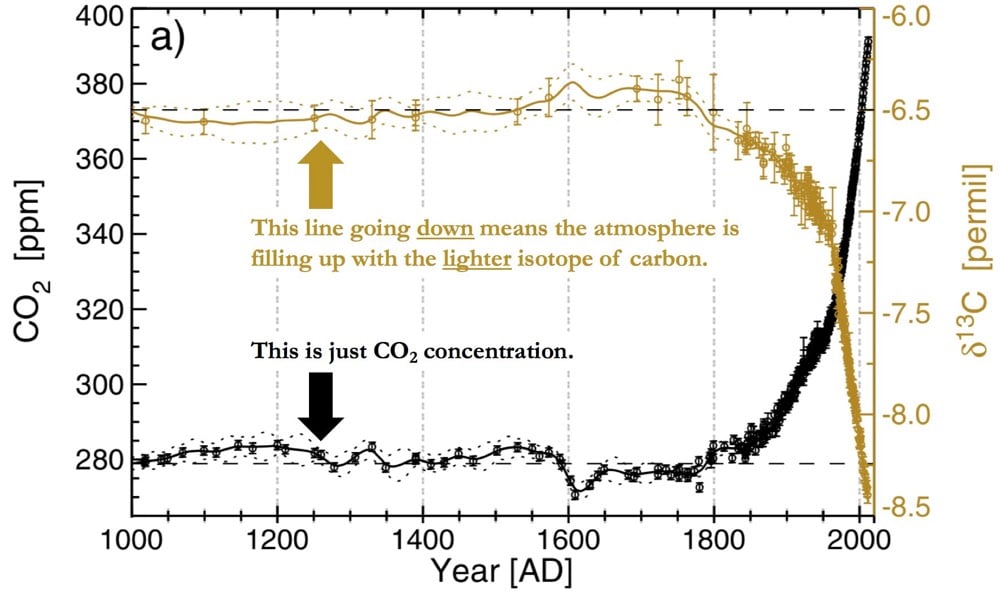How Do We Know Recent Climate Changes Are Caused By Humans?
One of the ways that climatologists know that the dramatically increasing amount of atmospheric carbon dioxide (and corresponding temperature increase) is caused by human activity is by measuring changing land use and how much fossil fuel has been burned over the last few hundred years. From a 2004 RealClimate article:
One way that we know that human activities are responsible for the increased CO2 is simply by looking at historical records of human activities. Since the industrial revolution, we have been burning fossil fuels and clearing and burning forested land at an unprecedented rate, and these processes convert organic carbon into CO2. Careful accounting of the amount of fossil fuel that has been extracted and combusted, and how much land clearing has occurred, shows that we have produced far more CO2 than now remains in the atmosphere. The roughly 500 billion metric tons of carbon we have produced is enough to have raised the atmospheric concentration of CO2 to nearly 500 ppm. The concentrations have not reached that level because the ocean and the terrestrial biosphere have the capacity to absorb some of the CO2 we produce. However, it is the fact that we produce CO2 faster than the ocean and biosphere can absorb it that explains the observed increase.
That was back when the CO2 concentration was ~380 parts per million…it’s now ~407 ppm. That is pretty convincing evidence all by itself…the inputs match the outputs.
But there is also extremely compelling corroborating evidence that has to do with what kind of carbon is being released into the atmosphere — the smoking gun of anthropogenic climate change, if you will. For several hundred years before the start of the 19th century, the CO2 in the atmosphere contained a more-or-less consistent ratio of two carbon isotopes: carbon-12 and carbon-13 (which contains one more neutron than carbon-12 and is therefore heavier). Plants prefer consuming the lighter carbon-12 over carbon-13 and since fossil fuels are ultimately made from decayed plants, when you burn them, they disproportionately produce carbon-12 (when compared to atmospheric CO2).
So if you’re burning a bunch of oil and coal, you’d expect to see carbon-12 levels in the atmosphere go up…and that’s exactly what scientists have found. If you graph the amount of carbon-12 present in the atmosphere over time, you can see very clearly that it begins rising in lockstep with CO2 concentration right around when people began burning a lot of fossil fuels circa 1800.

You can read more about how scientists took these measurements in the 2004 RealClimate article I mentioned above. Meteorologist Eric Holthaus says learning about these measurements “propelled me to a career in climate” and I can totally see why — this is really persuasive.





Stay Connected